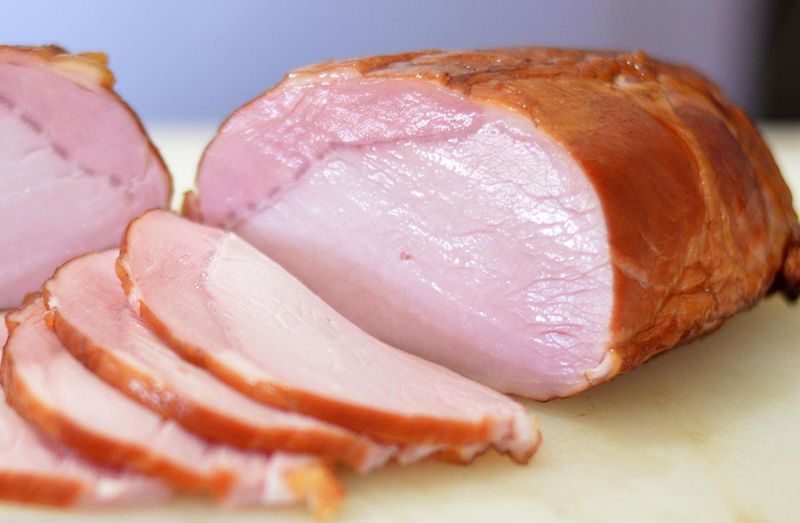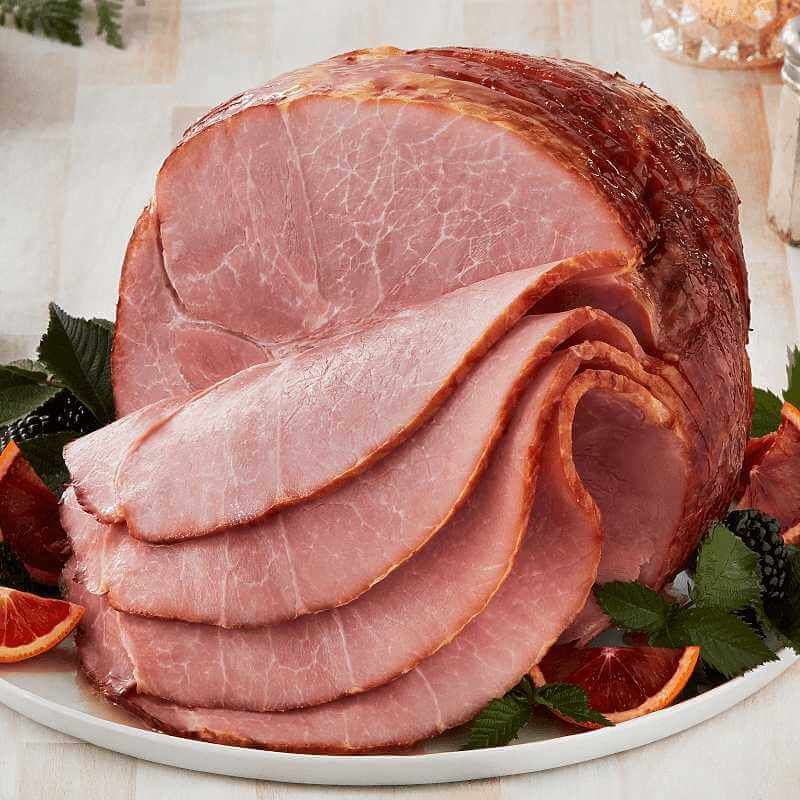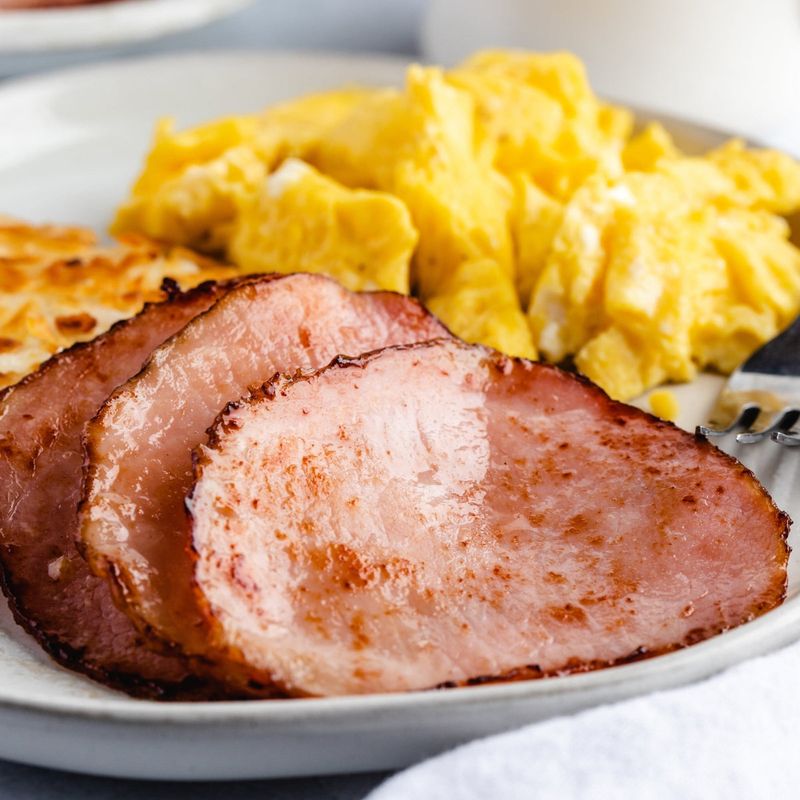Let’s be honest—when you’re halfway through a breakfast sandwich and you bite into a thick, round slice of meaty goodness, are you sure it’s ham? Or is it Canadian bacon? If you’ve ever stared at your brunch plate wondering if those savory slices are one and the same, you’re definitely not alone. While they may look deceptively similar on the plate, Canadian bacon and ham are actually quite different under the surface.
So, let’s dive into what makes Canadian bacon its own thing—and how it stacks up next to its porky cousin, ham. Whether you’re building the perfect eggs Benedict, prepping a protein-packed breakfast, or just curious about what’s on your plate, this guide will help you slice through the confusion.
The Cut: Where It Comes From Matters

One of the biggest differences between Canadian bacon and ham starts with where they’re cut from the pig.
Canadian bacon comes from the pork loin, which runs along the back of the pig, close to the spine. It’s a leaner, more uniform cut, which is why Canadian bacon typically shows up in those neat, round slices. Think of it like a cousin to pork chops—it’s that same muscle, just processed differently.
Ham, on the other hand, is sourced from the pig’s hind leg. That’s a larger, fattier section of the animal, which leads to a broader range of textures and flavors. Depending on how it’s cut and prepared, ham can come as a whole roast, a thick steak, deli-style slices, or even little cubes tossed into soup. It’s versatile, sure—but it’s not Canadian bacon.
Texture & Flavor: Lean vs. Rich
Because of where it comes from, Canadian bacon tends to be lean and meaty, with very little fat marbling. It’s smooth, tender, and holds its shape beautifully when cooked. Think of it as the minimalist in the bacon family—it skips the fat sizzle of American bacon and brings a cleaner, meatier bite.
Flavor-wise, Canadian bacon is mild, slightly sweet, and pleasantly salty. It doesn’t punch you in the taste buds like some bold country hams, but that’s part of its charm. Its gentle profile makes it a great supporting player in dishes where you want the meat to complement, not overpower.
Ham, on the other hand, is all about variety. Some hams are dry-cured and deeply smoky. Others are wet-brined and silky-sweet. Bone-in hams can be incredibly rich and fatty, while leaner cuts (like city hams) might resemble Canadian bacon in texture but still bring their own depth of flavor. Depending on how it’s prepared, ham can range from delicate to decadent.
Preparation Process: Brined vs. Cured

Now let’s talk process—because how the meat is treated after it’s butchered also plays a big role in its final taste and texture.
Canadian bacon is typically brined, meaning it’s soaked in a saltwater solution to help preserve it and boost the flavor. This process keeps it juicy and tender, and often includes subtle sweeteners (like maple syrup—how Canadian!) or spices. After brining, it’s usually smoked, but lightly, so the smokiness doesn’t overwhelm the meat’s natural taste.
Ham, in contrast, can be treated in several ways. Some hams are dry-cured with salt and aged for months (think prosciutto or country ham), developing a rich, concentrated flavor. Others, like city ham, are also wet-brined, which gives them a juicier bite similar to Canadian bacon. But many hams are also baked, roasted, or glazed, which adds even more layers to the flavor profile.
And here’s a little detail that often goes unnoticed: Canadian bacon is usually fully cooked when you buy it, but it’s still meant to be heated up before serving—typically seared or lightly pan-fried. Ham can be sold cooked or uncooked depending on the variety, so check the label before tossing it straight into your sandwich!
Breakfast Stars: Where Each Shines
If there’s one place Canadian bacon really owns the spotlight, it’s at the breakfast table. Whether it’s tucked into a fluffy English muffin with melted cheese and a fried egg, or starring in a classic eggs Benedict, Canadian bacon’s clean, lean bite is made for morning meals.
Its round shape and low fat content make it super easy to work with—no need to trim or fry for crispy edges like with American bacon. It’s ready to go, cooks in minutes, and won’t leave your skillet swimming in grease. Plus, its light sweetness and balanced saltiness mean it plays well with eggs, cheese, toast, and even breakfast potatoes.
Ham, while not as tightly associated with breakfast, is no stranger to the morning menu. A slice of ham steak or some diced ham in an omelet? Delicious. But it’s also a go-to for lunch and dinner—think ham and cheese sandwiches, baked holiday hams, or smoky additions to soups and pastas. It’s a culinary chameleon that shows up in a wide range of dishes.
So, Can You Substitute One for the Other?

Technically? Sure. But flavor-wise, you might notice the difference.
If you’re making something like a breakfast sandwich, Canadian bacon will give you a cleaner, milder profile, while ham might bring a stronger salt or smoke flavor, depending on the type. In something like Hawaiian pizza, both work well—though Canadian bacon is usually what’s used.
That said, some wet-brined hams (especially lean city hams) can come close in flavor and texture to Canadian bacon. If you’re in a pinch and only have one or the other on hand, it’s not the end of the world. Just remember that they’re not exactly the same—so your final dish might have a slightly different vibe.
The Bottom Line
Here’s the quick takeaway: Canadian bacon is a lean, brined pork loin that’s smoked and usually pre-cooked, perfect for breakfast and dishes where you want a mild, meaty bite. Ham comes from the leg, is usually fattier, and varies wildly in texture, taste, and preparation. Both are delicious in their own way—but they’re not interchangeable twins.
So next time you’re standing in the deli aisle or browsing brunch options, you’ll know what you’re looking at—and maybe even impress a friend or two with your porky knowledge. Whether you’re team Canadian bacon or a die-hard ham fan, one thing’s for sure: there’s no wrong choice when breakfast is on the table.
Leave a comment